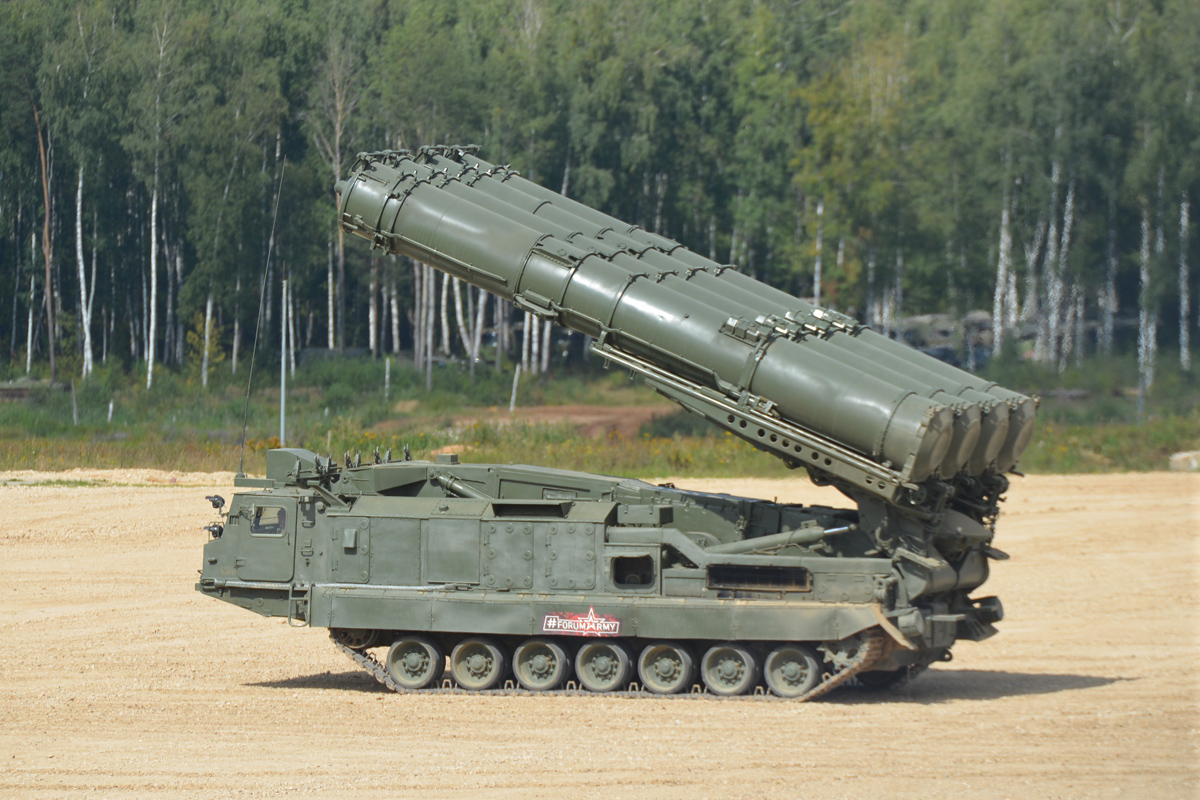Click Here to View This Page on Production Frontend
Click Here to Export Node Content
Click Here to View Printer-Friendly Version (Raw Backend)
Note: front-end display has links to styled print versions.
Content Node ID: 394966
Russia will supply Syria with “the modern S-300 surface-to-air missile system” within two weeks, defense minister General Sergei Shoigu said in a televised broadcast on Monday, September 24, a week after 15 Russian personnel lost their lives when their Il-20 aircraft was accidentally shot down by a Syrian air defense battery. He added that the command and control centers of the Syrian Arab Army’s air defense arm will receive “automated control systems,” which so far “have never been delivered” to any of Moscow’s foreign clients. In the minister’s words, “This shall enable a centralized control over all means and equipment of the Syrian air defense system, as well as surveillance of the airspace over the country and timely targeting.” Most important, this will ensure that the Syrian military can correctly identify Russian aircraft flying in Syrian airspace.
In addition to re-equipping President Bashar Al-Assad’s army, Shoigu also announced additional measures concerning the Mediterranean waters off the Syrian province of Latakia, where the Russian expeditionary force is based. They include the suppression of satellite-aided navigation, onboard radars, and communication systems in use on “combat aircraft committing attacks on targets in the Syrian territory.” He explained that these measures are necessary “to cool down the hotheads” and deter actions that threaten the safety of Russian servicemen deployed in Syria. He promised additional steps “in accordance with the situation as events unfold.”
The Russian defense ministry stepped up its involvement in the Syrian war under orders from President Putin, following his consultations with Al-Assad. During the discussion, the two leaders agreed on “long-term normalization of the situation in Syria, its sovereignty and territorial integrity.” Moscow and Damascus agreed on the delivery of the S-300PMU-2 Favorit surface-to-air missile system in 2011, but two years later Putin canceled this and other deals that concerned advanced weaponry (notably the Iskander land-attack missile), following a request from Israel and in view of the uprising against Al-Assad’s government. The Kremlin has now revisited its earlier decision following the downing of the Russian Air and Space Force’s Ilyushin Il-20 spyplane on September 17.
According to Shoigu, the Il-20 had been flying over Idlib gathering intelligence on anti-Assad rebels in that province when the Russians received warning from the Israeli air force about pending strikes on targets in the “north of Syria.” Since the Russians claim that the Israelis gave only a one-minute warning and misled them about the exact location of their targets, the spyplane aborted its mission and headed back to home base on the Mediterranean coastline. This placed the Il-20 in between Israeli F-16I Sufa fighters on a strike mission and no. 49 Syrian air defense regiment at Masyaf, with the latter inadvertently hitting the Russian aircraft with an S-200 (SA-5 “Gammon”) SAM. The Il-20 crashed into the Mediterranean 27 kilometers west of Banias seaport, killing all 15 crewmembers onboard.
Moscow accused the Israeli pilots of using the Il-20 as a shield against the S-200, the fire from which claimed a Sufa in February. Israel tweeted a series of replies saying that its F-16s were back in Israeli airspace at the time of the S-200 firing, to which Russia replied by publishing data from its own S-400 battery to reinforce its claims. Regardless of whether the F-16s were a factor in the shootdown, the tragedy highlighted an inability of the Syrian defenses to discriminate the Il-20 from potential hostile targets.

There is no certainty yet as to which version of the S-300 family will be supplied to Assad’s army. The PMU-2 Favorit version that Damascus ordered in 2011 is no longer in production. The last shipments took place to Iran and were, admittedly, of a transitional variant that employs elements from the more recent S-400 that has been in production since 2007. In his televised address Shoigu referred to the Syrian S-300 as “modern…able to intercept aerial targets at a distance exceeding 250 kilometers and shoot at several targets simultaneously.” He added that “it features high immunity to jamming and rapid rate of fire.” Such a description leads some experts to believe that it might well be the S-300V4E, also known as the Antey-2500. This version uses 9M82/83 missiles twice as heavy as the 48N6E2 developed for the Favorit. The missile is able to intercept incoming ballistic missiles as well as aircraft.
Another option might be redundant S-300P/PS/PMs from Russian stocks. Before shipment, they would undergo upgrades through technology insertions from later versions of the family. To comply with the advertised firing range of “over 250 km,” they need to employ modern 48N6E2 or 48N6DM missiles, or even the newest missiles of the 40N6 family adopted recently for use in the S-400 and S-500 systems. Because of the complexity of the S-300 and the speed with which such systems are being promised to Damascus, the crews manning them are likely to be a mix of Syrian and Russian personnel, as it would take several months for the Syrian army to master the weapon.